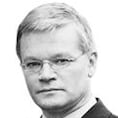Starting in 1972, UNIDO (a United Nations agency) hosted a series of training courses in Shannon on national strategies for export processing zones. In 1980 eight Chinese led by Jiang Zemin, a senior vice-minister, attended as part of a six-nation global tour of special economic zones.
Returning to China, Jiang persuaded the Premier, Deng Xiaoping, to commence a special zone in Shenzhen, at the time a small regional city of about 300,000. By the millennium Shenzhen had grown to more than 4 million, of which 70 per cent were workers.
In 1987 a 43-year-old engineering manager, Ren Zhengfei, was attracted by the incentives available and so decided to found his start-up in Shenzhen. As a student Ren had survived a famine in his home province of Guizhou, and subsequently the challenges of the Cultural Revolution.
He raised the equivalent of €2,700 for his start-up, Huawei, and focused on reselling telephone switches imported from neighbouring Hong Kong. In due course his team learned the technicalities of various imported European and American telephone exchanges and began developing their own.
By 1993 Huawei had built the most advanced telephone exchange available in China, and by the end of the decade started exporting to the Middle East and Africa.
Forward to 2019 and with the 75-year-old Ren still at the helm as CEO, Huawei was by far the leading telecommunications infrastructure company worldwide by brand value, and the largest mobile phone vendor in China with a 40 per cent market share.
Concerns were expressed over the vulnerability of American 5G data to cyber-espionage via Chinese-supplied infrastructure.
Along with ZTE (another Chinese company), Huawei had begun to dominate the global market for 5G mobile infrastructure, ahead of Europe’s Nokia and Ericcson, and without any credible American competitor. However it had drawn the attention of US policy strategists and particularly the Trump administration.
Concerns were expressed over the vulnerability of American 5G data to cyber-espionage via Chinese-supplied infrastructure. The administration also alleged that Huawei had violated US sanctions on Iran, which in turn led to criminal charges against Ren’s daughter and Huawei CFO Meng Wanzhou. Meng was placed under house arrest while visiting Canada and faced extradition to the US.
In May 2019, Trump declared a national emergency banning US companies from using technology from Huawei. A number of American semiconductor companies, including Qualcomm and Intel, were prevented from continuing to supply Huawei. Pressure was applied to US allies, including Ireland, not to use Huawei technology in their 5G networks.

Is the restriction on passenger numbers at Dublin Airport doing untold damage to our economy?
Chip tooling manufacturers, especially Dutch lithography specialist ASML, were forced to stop shipping advanced equipment and so hinder Chinese development of advanced seven nanometre chips and beyond.
Huawei denied any wrongdoing and fought in various courts, and Meng was released in September 2021. Nevertheless, the actions significantly impacted Huawei’s market share and forced it to diversify away from integrating western technologies into its product ranges. Ren issued a companywide memo in August 2022 expressing deep concerns for the future of the company.
Today Huawei seems to be well on its way to reinventing itself. Its 2023 revenues were €90 billion, up 9 per cent from 2022 although still below the peak of €113 billion in 2019. It has regained 22 per cent of the Chinese mobile phone market, having dropped to as low as 14 per cent after the US sanctions were imposed.
Last August saw its first new phone release since the US crackdown, with two further new phones just a week later. The new Mate60 Pro phone uses seven nanometre technology, and is largely the result of a 2019 initiative by the Shenzhen city government to accelerate a domestic “self-sufficient chip network”.
Up to 10,000 Huawei engineers were reportedly on a 24-hour cycle to redesign Huawei’s products away from imported technologies. Engineers who had previously worked at ASML and other key companies were actively recruited. A Shenzhen-based specialist chip lithography company, SiCarrier, has formed a symbiotic relationship with Huawei’s research department.
His remarkable leadership and charisma have rebuilt Huawei from the restrictions imposed in 2019, underlining his view that “America does not represent the world”.
Concurrently Huawei invested heavily to develop a software ecosystem for its phones and other applications, independent of Google’s Android and Apple’s iOS. Its HarmonyOS operating system was designed from scratch, starting in 2012 and making its first appearance in Huawei products in 2019.
The rapid advance in semiconductor capability and software was unexpected from the US perspective, and no doubt embarrassed the US trade secretary who was visiting China when the new phone was launched. US analysts immediately doubted whether Huawei and its Shanghai foundry partner SMIC could produce the new advanced chips in volume.
Nevertheless it now appears that Huawei may well ship some 70 million units of the new phone this year, representing about a quarter of the Chinese market.
Ren is also leading Huawei into the markets for all-electric smart cars and artificial intelligence, but those are analyses for another time. His remarkable leadership and charisma have rebuilt Huawei from the restrictions imposed in 2019, underlining his view that “America does not represent the world”.
- Sign up for Business push alerts and have the best news, analysis and comment delivered directly to your phone
- Find The Irish Times on WhatsApp and stay up to date
- Our Inside Business podcast is published weekly – Find the latest episode here












